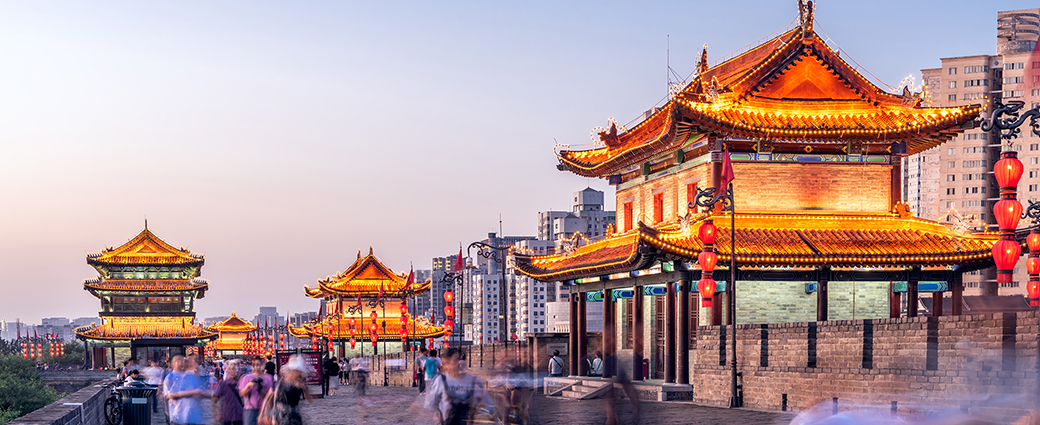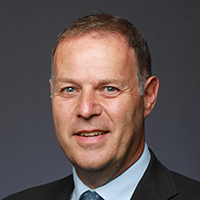Emerging markets — a growing opportunity!

Why this asset class is worth consideration
Word association is an interesting exercise. If you were to ask investors to describe emerging markets, chances are some of the words you would hear might include esoteric, risky, and turbulent, possibly based on old preconceptions. But now it may be time to take a fresh look at the potential of this evolving asset class.
“At one time, emerging markets were seen as a risky asset class, and perhaps rightfully so, as they were subject to greater political, economic, currency, and market risk than developed markets. But things have changed, forcing us to take a closer look at them as a core asset class,” says Philip Petursson, Chief Investment Strategist, Manulife Investment Management.
Twenty years ago, the economies of Mexico, Brazil, and South Africa accounted for nearly 30 per cent of emerging markets. Today, that number is 10 per cent, with regional exposure now tilted towards Asia. China, India, South Korea, and Taiwan currently account for nearly 80 per cent of the overall Emerging Markets Index, which China dominates with a robust 40 per cent of the Index.
While the countries with the most economic influence in emerging markets have shifted, so too has the makeup of sectors. “Back in 2008, the energy and materials sectors accounted for nearly 40 per cent of the Emerging Markets Index, but now represents only 13 per cent. Technology, communication services, and consumer discretionary services have seen their share of the Index nearly double, from 26 per cent to 48 per cent, in this same time period,” says Petursson.
As Senior Managing Director and Senior Portfolio Manager of the Manulife Emerging Markets Fund, based in London, England, Philip Ehrmann has witnessed first-hand the growing opportunity presented by emerging markets over the last three decades. Recently, Philip Petursson hosted Philip Ehrmann on episode 56 of the Investments Unplugged podcast, which looked at emerging markets.
“In the past, emerging markets have been a catchall where you would have low-income countries such as Malaysia grouped in with more prosperous countries such as Portugal and Greece,” says Ehrmann. “Today, we are looking at 27 markets with very high contrast in terms of economic activity and societal growth. These markets range from highly developed China, Taiwan, and South Korea to parts of Africa, Latin American, and east Asia, where income levels, employment opportunities, and economic development are quite different.”
The sectors that make up emerging markets have also seen a dramatic transformation.
“The other interesting thing is the shift in sector weighting in the emerging markets,” says Ehrmann. “Once upon a time, they were very driven by commodities — the building blocks of global economic activity. With Malaysia, palm oil became a big driver as an emerging market commodity, over a more traditional commodity such as iron ore. Today’s consumer trends now also put more focus on technology created by some fairly leading-edge companies in Asia.”
With such a range of contrast among countries that operate under the emerging market banner, process becomes incredibly important for the Manulife Emerging Markets equities team.
“Overall, we try not to overcomplicate things. Our starting point is really to think about governance issues, and this is governance from the company level right up to the government and nations themselves. If we find that there is too much interference, or if interests are not aligned with us as minority shareholders, that becomes an immediate red flag for us. Our team also uses cost of capital to create a benchmark for examining the strength of each country in an apples-to-apples comparison, regardless of the political or economic turmoil a country may be facing — rather than the team feeling over-stretched trying to make adjustments for differing paces of economic activity,” says Ehrmann.
Along with company and market performance, diversity across multiple sectors and countries is another important factor.
“We do pay attention to make sure we don’t just concentrate on one sector in one country. In our portfolio, we currently have a favourable stance on China and the sectors and companies in that market, and we are very aware that we don’t want this fund to be just a Chinese equity portfolio. It’s balanced by other opportunities — some more attractive and exciting than those found in China — from countries as far afield as Brazil, South Africa, and indeed, some of the other Asian economies,” says Ehrmann.
Post-pandemic opportunity
As economies reopen with higher inflation at the forefront, conditions may appear favourable for emerging markets. Research conducted by Manulife Investment Management’s Capital Markets Strategy team could indicate an accelerated growth environment well into 2022, as manufacturers play catch-up with existing demand and then work to meet future demand.
“You have strong growth in the Asian economies that have managed quite well through the pandemic — and maybe this is due to technologies — but then you have the commodity demand as well. So, it seems that there is huge potential for emerging markets as the economic reopening continues,” says Petursson.
The effect of pandemic lockdowns on emerging markets has run the gamut from sharp contractions due to manufacturing shutdowns to wild expansion because of the need for cloud computing services to support the skyrocketing demands brought forward by a global pivot to working from home.
“There are some economies that benefitted greatly from the pandemic. For example, work from home meant increased demand for internet-related services for video conferencing, digital transactions, and enhanced server farms to accommodate the increased capacity of cloud computing,” says Ehrmann. “As we see an increase in e-commerce and cloud computing, emerging markets such as Taiwan and South Korea are valued for their manufacturing of semiconductor chips, hand-held devices, and other electronic devices that we all take for granted.”
As the pandemic reopening moves in a wave of cascading shutdowns and reopenings, Ehrmann sees this as a positive development that’ll help to avoid a supply chain bottleneck for goods and resources. As for inflation, again, his overall view is fairly positive — not only for emerging markets, but globally.
“I think this gradual global reopening takes some of the concern out of rising inflation pressures. We don’t see inflation pressures yet in emerging markets, and inflation concerns are likely temporary as global economies reopen and supply chain issues are sorted out. Interest rates are also likely to remain lower for longer as governments seek to ensure their economies pick up. Equally, I see economic growth being spread out in a way that should be very beneficial,” says Ehrmann.
Despite a market correction earlier this year, Ehrmann describes this asset class as “exciting” with attractive room for growth.
“Overall, emerging markets as an asset class is still up for the year, it has rebalanced, and some of the stocks that we liked have given us another opportunity with a pullback of 25 to 30 per cent. Other stocks in the emerging markets, such as Taiwanese tech companies that were standing on very low ratings have performed very strongly. This has given us the opportunity to recycle the portfolio in a very dynamic way this year.”
For investors considering emerging markets, some final thoughts from Ehrmann:
“There is a transformation happening right now across emerging markets. In 1995, soon after I got involved in this space, there were only three Chinese companies that made up the global Fortune 500, as compared to 150 in the U.S. As of the end of 2020, there are 124 Chinese companies in the global Fortune 500 versus 121 U.S. companies. So even just looking at China, I think emerging markets very much deserve their place in investment portfolios.”
Important disclosure
A rise in interest rates typically causes bond prices to fall. The longer the average maturity of the bonds held by a fund, the more sensitive a fund is likely to be to interest-rate changes. The yield earned by a fund will vary with changes in interest rates.
Currency risk is the risk that fluctuations in exchange rates may adversely affect the value of a fund’s investments.
The opinions expressed are those of Manulife Investment Management as of the date of this publication, and are subject to change based on market and other conditions. The information and/or analysis contained in this material have been compiled or arrived at from sources believed to be reliable but Manulife Investment Management does not make any representation as to their accuracy, correctness, usefulness or completeness and does not accept liability for any loss arising from the use hereof or the information and/or analysis contained herein. Manulife Investment Management disclaims any responsibility to update such information. Neither Manulife Investment Management or its affiliates, nor any of their directors, officers or employees shall assume any liability or responsibility for any direct or indirect loss or damage or any other consequence of any person acting or not acting in reliance on the information contained herein.
All overviews and commentary are intended to be general in nature and for current interest. While helpful, these overviews are no substitute for professional tax, investment or legal advice. Clients should seek professional advice for their particular situation. Neither Manulife, Manulife Investment Management Limited, Manulife Investment Management, nor any of their affiliates or representatives is providing tax, investment or legal advice. Past performance does not guarantee future results. This material was prepared solely for informational purposes, does not constitute an offer or an invitation by or on behalf of Manulife Investment Management to any person to buy or sell any security and is no indication of trading intent in any fund or account managed by Manulife Investment Management. No investment strategy or risk management technique can guarantee returns or eliminate risk in any market environment. Unless otherwise specified, all data is sourced from Manulife Investment Management.
Manulife, Manulife Investment Management, the Stylized M Design, and Manulife Investment Management & Stylized M Design are trademarks of The Manufacturers Life Insurance Company and are used by it, and by its affiliates under license.
